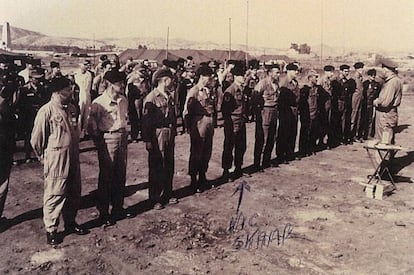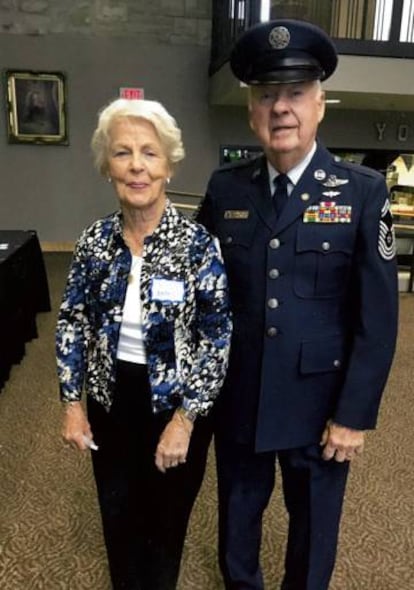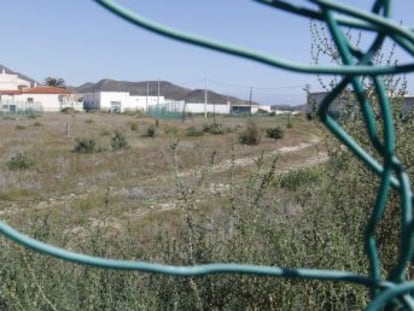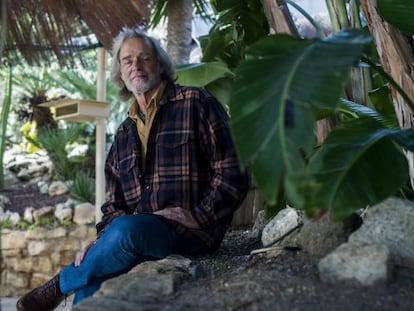Half a century after Palomares nuclear accident, a glimpse of justice
Veteran who helped remove radioactive soil heads effort to file class action suit against US government

It¡¯s been 51 years, but Victor Skaar still gets emotional as he provides a wealth of details, as though the Palomares nuclear incident had taken place just a few days ago.
¡°We received notice that there had been an accident and that we should be ready to head out there,¡± explains Skaar, a US Air Force veteran. Skaar was 29 at the time and stationed at the US military base in Mor¨®n de la Frontera, where he worked for the medical and emergency department. After a three-year tour of duty in Spain, he was about to go home.
¡°We had all been well trained; we had experience, but we were praying that we¡¯d never have to face a real-life situation,¡± recalls Skaar, who is now 81.
Skaar described Palomares in 1966 as ¡°a very primitive place¡±
But such a day arrived on January 17, 1966, when a US B-52 bomber collided in midair with a refueling plane and dropped four hydrogen bombs on the coast of Almer¨ªa, in southern Spain. While the bombs did not explode and nobody was killed, two of them released plutonium across the land in ¡°a place called Palomares, which nobody could find on a map,¡± notes Skaar in a telephone conversation.
He and 60 other uniformed servicemen arrived in this poor rural spot in the middle of the night. There was an ambulance with them. The Cold War was in full swing, this was a highly sensitive situation, and Washington¡¯s priority was to quickly eliminate all evidence of one of the biggest nuclear accidents in history. Health took a backseat.

¡°High-ranking officials decided that we would not be very effective if we wore respiratory protection, and that we would be fine as long as we didn¡¯t breathe the material. Having said that, we realized that it was impossible not to breathe something,¡± recalls Skaar.
He knew what his own role was ¨C to take measurements. But other people did not know what they were looking for, and their orders were vague: ¡°Grab anything that doesn¡¯t belong here.¡±
Skaar, who lives in Nixa, a small town in Missouri, says that at the time he did not worry about the potential effects of radioactivity on his health, and that he does not believe that top military brass acted in bad faith.
For 62 tough days when food was scarce and US servicemen slept in tents, Skaar took measurements in Palomares and helped collect contaminated soil in barrels. He insists that he was following orders, and recalls an analogy that used to go around in his head: ¡°It¡¯s like getting shot: you worry about it, but if it happens, someone will take care of you.¡±
But reality turned out quite different. Upon his return to the US in late 1966, the Air Force told Skaar that he would undergo urine tests for the rest of his life to determine radioactivity levels. Yet two years later he was informed that these would no longer be necessary.
The problems began in 1982. Skaar was diagnosed with leukopenia, a condition that reduces white blood cells. His doctor attributed it to his exposure to plutonium in Palomares. Later Skaar suffered from prostate cancer and skin cancer, which are under control. Doctors again pointed at radioactivity as the most likely cause.
There are still 50,000 cubic meters of contaminated soil in Palomares
Following the first diagnosis, Skaar applied for disability benefits from the Department of Veteran Affairs, a standard move for retired servicemen who suffer from an ailment in connection with their years of service. But the request was denied. According to the US Armed Forces, neither he nor the nearly 1,600 soldiers who were in Palomares were exposed to radioactive risks.
¡°They ignored us,¡± he says. Their medical records had disappeared. He suspects they were eliminated by some ¡°high-ranking authority.¡±
Skaar then began a personal crusade that he says is a lot more about honor than about money. He wants to gather all possible documentary evidence about the accident and claim compensation for all the servicemembers who helped clean up Palomares.
Three decades later, he scored his biggest victory on December 11, when Yale Law School students representing Skaar and other servicemembers filed a request with the U.S. Court of Appeals asking it to allow a class action lawsuit against the U.S. Department of Veterans Affairs.
The students had read about the case in the media, and got in touch with Skaar in 2016.
The accusation holds that the US administration made a ¡°fundamentally flawed¡± analysis of the health risks posed by the incident in Almer¨ªa, and that the claimants did not receive adequate protection, nor was their exposure to radiation measured in many cases.
Asked about the case, a spokesman for the Veteran Affairs Department declined to comment.
Skaar has a list of 40 veterans who were with him at the time and whom he hopes to include in a class action suit. Two of his acquaintances died of cancer five years after returning to the United States.
¡°This is not about me,¡± he says over and over. ¡°I¡¯m concerned about the people who were ignored and who had cancer at a younger age.¡±
There is one more idea that he keeps underscoring: ¡°I have no regrets.¡±
Skaar described Palomares in 1966 as ¡°a very primitive place¡± with no electricity or running water, with adobe homes and grazing cattle. He also had high praise for the local residents. He returned in 2000 and saw how much Spain had changed.
Yet there are still 50,000 cubic meters of plutonium-contaminated soil in Palomares. In 2015 the US government pledged to remove it, but the promise has yet to materialize. Following the accident, the US removed 1.6 million tons of earth and assured that no toxic remains were being left behind.
¡°When they took away that soil, we left. We understood that we had taken it all,¡± underscores Skaar. But the shadow of Palomares¡¯ radioactivity will not go away, it seems.
English version by Susana Urra.
Tu suscripci¨®n se est¨¢ usando en otro dispositivo
?Quieres a?adir otro usuario a tu suscripci¨®n?
Si contin¨²as leyendo en este dispositivo, no se podr¨¢ leer en el otro.
FlechaTu suscripci¨®n se est¨¢ usando en otro dispositivo y solo puedes acceder a EL PA?S desde un dispositivo a la vez.
Si quieres compartir tu cuenta, cambia tu suscripci¨®n a la modalidad Premium, as¨ª podr¨¢s a?adir otro usuario. Cada uno acceder¨¢ con su propia cuenta de email, lo que os permitir¨¢ personalizar vuestra experiencia en EL PA?S.
En el caso de no saber qui¨¦n est¨¢ usando tu cuenta, te recomendamos cambiar tu contrase?a aqu¨ª.
Si decides continuar compartiendo tu cuenta, este mensaje se mostrar¨¢ en tu dispositivo y en el de la otra persona que est¨¢ usando tu cuenta de forma indefinida, afectando a tu experiencia de lectura. Puedes consultar aqu¨ª los t¨¦rminos y condiciones de la suscripci¨®n digital.










































